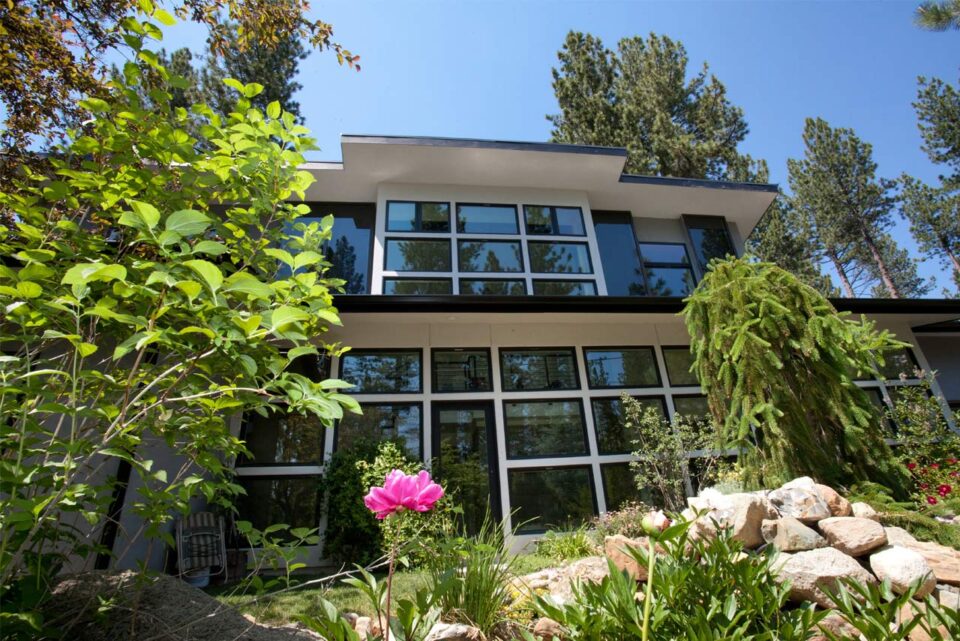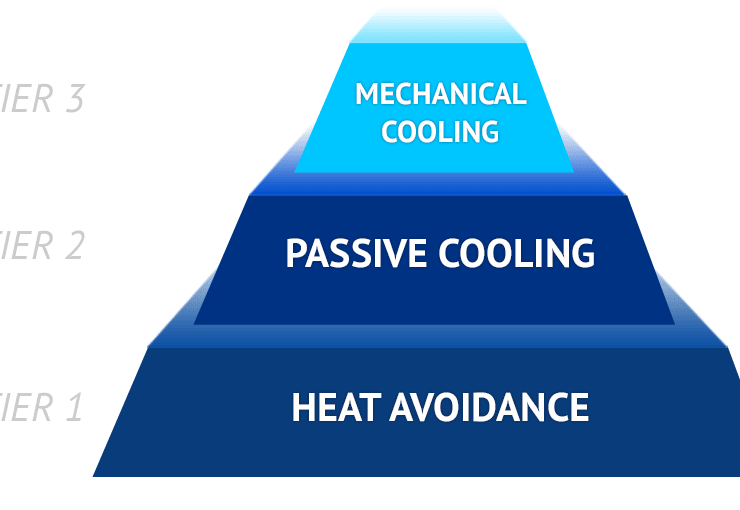The process of avoiding heat can employ some of the same principles as retaining heat—including insulation and a tightly sealed building envelope.
There are also other methods to help keep a building from gaining heat. Shading windows properly, so that too much direct sun doesn’t enter the building to cause overheating, is one essential strategy that is integral to the architecture of the building. Other issues and strategies include building orientation, outside vegetation/landscaping, and control of internal heat sources. Effective use of natural light (daylighting), for example, reduces the need for electric lighting and its associated heat gain. The color of roofs, walls, and surrounding hardscape is also very important since darker colors absorb more solar radiation, which can add heat to the building.

Effective passive cooling is ultimately climate dependent. Strategies that are effective in hot, dry climates may not be effective in hot, humid climates. Passive cooling strategies include comfort ventilation, night purge ventilation, radiant cooling, evaporative cooling and earth coupling.
Mechanical cooling is achieved with a equipment that pumps heat out of a building. While mechanical heating has been around for thousands of years, mechanical cooling has only been around for about 150 years. The most common form of refrigeration is the compressive method, which relies on a large amount of energy required to change a liquid to a gas and the same amount released when it is changed back to a liquid. Using this principle, heat is transferred from the interior of a building to the exterior. Evaporative coolers, heat pumps, and geothermal heat pumps are some of the most common cooling systems.



